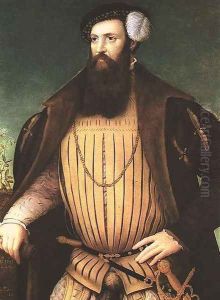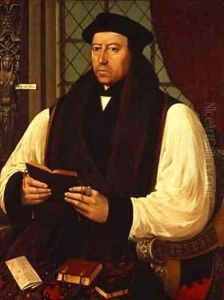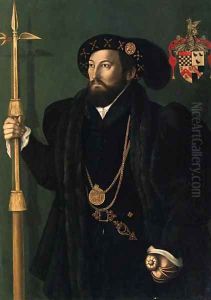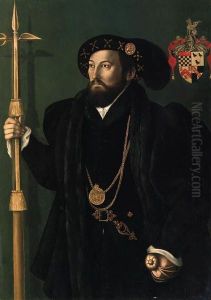Gerlach Flicke Paintings
Gerlach Flicke, born around 1518, was a notable portrait painter of German origin whose career flourished in England during the mid-16th century. Little is documented about Flicke's early life in Germany before he ventured to England. His arrival in England, believed to be in the early 1540s, marked the beginning of his significant contribution to the Tudor era's portrait painting landscape. Flicke's work is recognized for its meticulous detail, capturing the intricate aspects of his sitters' appearance and attire, which was a testament to the evolving art of portraiture during this period.
Flicke's clientele included members of the English nobility and scholars, a testament to his reputation and the demand for his skill. One of his most famous works is the portrait of Thomas Cranmer, the Archbishop of Canterbury, showcasing Flicke's ability to convey both the status and the personality of his subjects. Another notable work is his self-portrait from 1554, which is among the earliest known self-portraits by an English artist. This particular painting also holds historical significance as it includes an inscription indicating that Flicke painted it while he was imprisoned in the Tower of London, offering insights into his life and the turbulent times he lived in.
Despite his German origins, Gerlach Flicke's contribution to English art cannot be understated. His works provide a valuable glimpse into the Tudor court's complex social and political life, capturing the likenesses of figures who played pivotal roles in England's history. Flicke's portraits are celebrated for their depth, realism, and the artist's skill in using his medium to not only document but also to interpret the characters of his subjects. Unfortunately, Flicke's promising career was cut short by his untimely death in 1558. Today, his surviving works continue to be studied and admired for their historical significance and artistic merit, securing Flicke's place in the annals of art history as a pioneering portraitist of the 16th century.



